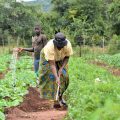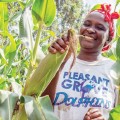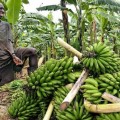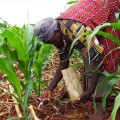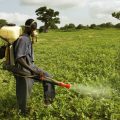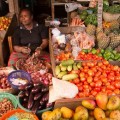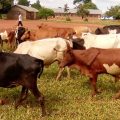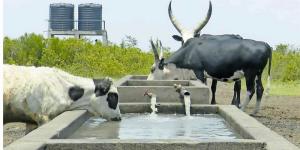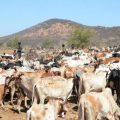FARM NEWS
Banks devise ways of increasing lending to agriculture
Published
6 years agoon

A teller counts money in a bank. Bankers have started the conversation about lending more to the agriculture sector. the share of lending to agriculture as a percentage of total private sector credit has more than doubled from 5.2 per cent in 2009 to 12 .9 per cent in 2019. PHOTO BY ERONIE KAMUKAMA
Agriculture can offer an opportunity for inclusive, economic growth, particularly in developing countries such as Uganda. With sufficient financing for sustainable and climate-smart production systems, experts believe that the sector can unlock economic potential.
In response to the above benefits, commercial banks in Uganda are positioning themselves to use an ecosystem to increase lending to the agricultural sector in the next five years based on their aspiration of raising lending to agriculture to 20 per cent from the current 12 per cent.
Agriculture lending
The last decade has seen a remarkable improvement in lending to agriculture. Private sector credit to this sector has increased in nominal terms from Shs241.7 billion in 2009 to over Shs1.6 trillion in early 2019. Currently, the share of lending to agriculture as a percentage of total private sector credit has more than doubled from 5.2 per cent in 2009 to 12 .9 per cent in 2019
The agriculture ecosystem is an open system, whereby continuous human intervention is needed for the maintenance of equilibrium with the aim of maximising the production provided by a few domesticated plants (crops) and animal species.
In an interview with Prosper Magazine last week, the chairman Uganda Bankers Association (UBA) who is also the chief executive of Stanbic Bank Uganda, Mr Patrick Mweheire, said by increasing lending to agriculture, banks will aggregate farmers in groups depending on what crops they produce such as barley, cocoa, coffee and maize among other crops grown in Uganda.
“We have scaled up financing (lending) in specific crops grown by the farmers under the ecosystem,” he explained.
Mr Mweheire said partnerships such as the Agriculture Credit Facility (ACF) at Bank of Uganda and other initiatives will help in de-risking agriculture.
He said as Stanbic bank Uganda they have financed the entire value chains with Nile Breweries.
Mr Mweheire challenged bankers to rethink about financing agriculture.
“Bankers and financers must start seeing agriculture from another pair of lenses. We must invest in understanding the dynamic and cycles in agriculture and structure appropriate financing models that suit agriculture and its value chains,” he said.
Agriculture contributes 25 per cent of the Gross Domestic Product (GDP) of Uganda, and banks’ want to match lending to agriculture with the same level it contributes to GDP.
Asked how Stanbic Bank is doing regarding lending to agriculture, Mr Mweheire said: “At stanbic our lending to agriculture is already at 25 per cent.”
Bankers aspire to increase lending to agriculture from the current 12 per cent to 20 per cent in the next four to five years.
The executive director of Uganda Bankers Association, Mr Wilbrod Owor, said, “It is a change that will take some time.”
The Rabobank Group operates in 48 countries, providing clients in every market with industry expertise, extensive experience, innovative resources – and deep local market and sector knowledge.
Agricultural financier
Rabobank is rooted in the Netherlands and has a large network in the agricultural business, research and education sectors.
Rabobank — a global leader in food and agriculture financing — has played an important role in developing Dutch agriculture and horticulture, both businesses in the Netherlands.
Rabobank was founded in the 1890s by farmers as a small cooperative of banks serving their rural communities. The cooperative model was designed to provide a fair and reliable source of credit to local customers through a system of shared liabilities, pooled resources and reservation of profits.
Rabobank expanded its business scope and geographic presence throughout the 20th century, adding a broader range of banking and financial services to meet the needs of its customers in the Netherlands and internationally.
Here in Uganda, Rabobank is supporting agriculture through the Netherlands Embassy. In dfcu bank, it is giving technical assistance on issues related agriculture financing.
Ms Marianne Schoemaker, the managing director, Rabo Partnerships, explained how banks can de-risk agriculture to promote decent youth employment and inclusive growth.
In an interview with Prosper Magazine, on how banks in Uganda can increase their lending to agriculture, Ms Marianne said banks should understand the business of their clients.
“They (banks) need to have an understanding of the business that they are servicing well; for instance, fish supplier trend, logistic inputs for the case of crops and the risks,” she said.
Ms Marinne said government needs the knowledge on how to blend financing for that particular product.
Sharing her knowledge on how Rabobank has operated effectively in agriculture financing, Ms Marianne said their operation is based on knowledge, network and finance.
“These three are crucial because it provides the insights on our operational models,” she
Marianne added: “Use the knowledge and come up with the financing solutions for clients. You need a network that provides information to you whether to provide financial support or technical assistance,” she explained.
Agriculture Insurance
During the Financial year 2016/17, government of Uganda established the Uganda Agriculture Insurance Scheme (UAIS) as a pilot project whose objective is cushion farmers from risks associated with losses from natural disasters while attracting financing to agriculture.
Agriculture Insurance encourages commercial banks to lend to the agriculture sector given that the risks associated with agriculture are mitigated through appropriate insurance covers, improving access to agriculture loans.
The scheme provides an insurance cover for crops and livestock, for both small and large-scale farmers. Under the scheme, government provides premium subsidy funds, and in collaboration with industry players also undertakes publicity, sensitisation and training of farmers.
The Insurance Regulatory Authority of Uganda (IRA) provides the regulatory oversight and quality control, Bank of Uganda on the other hand, manages the drawdown on UAIS Account, while monitoring and evaluation of the scheme is done by the UAIS Technical Working Committee.
Started on July 1, 2016 with Shs5 billion, the Uganda Agricultural Insurance Scheme (UAIS) is a Public Partnership arrangement, which covers five years.
The Acting Commissioner Financial Services in the Ministry of Finance, Mr Ira Kirungi John Byaruhanga, said the number of farmers accessing the agriculture insurance scheme has grown.
“In the last one year, we have seen uptake in this scheme increasing. 77,000 farmers are accessing the funds through the scheme,” he said.
In developing Uganda’s agricultural sector to the desired level, which attracts high credit services from the commercial banks, the governor Bank of Uganda, Mr Emmanuel Tumusiime Mutebile, said potential areas of further investment for government and the financial sector include roads, cold storage, transport, support for farmer organisations, agricultural extension and out grower schemes.
“Bank of Uganda will continue working with government and commercial banks in promoting affordable agricultural finance through the Agricultural Credit Facility, which we encourage all eligible borrowers to take advantage of,” he said.
Agriculture Credit Facility
The Agriculture Credit Facility (ACF) cumulatively disbursed Shs332 billion by 31st March, 2019, to finance 551 eligible projects. This enabled borrowers to establish large capacity agro-processing facilities, expand grain trade and investment in warehousing and expanding farm infrastructure.
However, 15 loans valued at Shs9.4b financed under the ACF were due for write off as at March 31, 2019.
The Netherlands’ Ambassador to Uganda, Henk Jan Bakker said di-risking agriculture finance is of critical importance to the development of Uganda’s economy. Ambassador Henk observed that commercial interest rates are still high. “Money cost is very expensive in Africa as a whole,” he said
Going forward, Ambassador Henk advised that to develop Uganda’s agriculture system government, donors and private sector have a role.
INVESTMENT AREAS
In developing Uganda’s agricultural sector to the desired level, which attracts high credit services from the commercial banks, Mr Mutebile said potential areas of further investment for government and the financial sector include roads, cold storage, transport, support for farmer organisations, agricultural extension, and out-grower schemes.
Mr Mutebile said it is also necessary to address information asymmetries, for example, by matchmaking international firms and local suppliers.
“Only through boosting agricultural development through inclusive rural-urban links will we effectively harness the agriculture sector as a dominant source of employment. I applaud the UBA for rising to this challenge and call upon Government to join the bankers in the modernization of agriculture for job-creation and inclusive economic growth,” he said.
De-risking agriculture
Several other initiatives have been introduced to harness opportunities while combatting obstacles including de-risking lending to the agricultural sector with schemes such as the ACF at Bank of Uganda, the agri-business development & guarantee scheme at aBi Trust, the Ugandan Agricultural Insurance Scheme, farmer skills empowerment programmes to enable them to undertake agriculture as a business.
More recently, there have been increased points of access to financial services through agent banking and use of other digital infrastructure to speed up financial payments and money flows through technology.
Without incentives, farmers are limited in their ability to invest the time and capital to change agricultural practices and overcome technical, cultural or financial barriers to sustainable production.
These incentives encourage farmers to protect and deliver more services through better management of crops, livestock, forest and fisheries, and conservation of endangered species and protected.
You may like
-
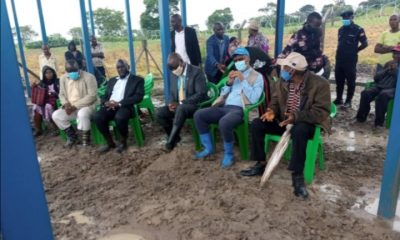

FAO launches solar powered irrigation systems in Kalungu
-


Kiruhura and Kazo lift ban on milk sale
-


Multi-billion cereal processing plant opens in Soroti
-


A government project is pushing hundreds of families off the land without re-settlement
-
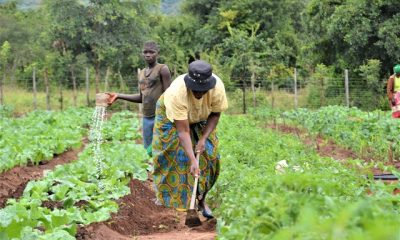

Agriculture insurance still a mystery among farmers in Acholi
-


Agriculture sector allocated UGX 1.5 trillion to boost agro-production
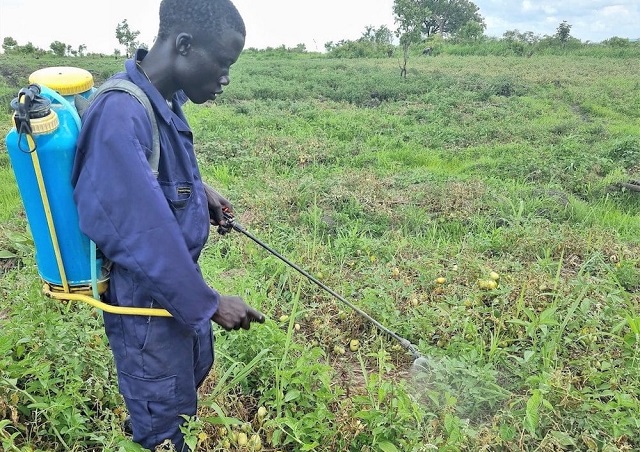
A smallholder tomato farmer in the northwestern Uganda region of West Nile sprays his half-acre tomato garden without adequate protection. Many farmers around the country interact with hazardous agro-chemicals without using adequate PPEs. COURTESY PHOTO/SASAKAWA AFRICA ASSOCIATION.
A consortium of civil society organisations (CSOs) has in a Jan.05 statement shown concern about the continued wrong use of dangerous pesticides in the country.
Members of the concerned CSOs mainly work to promote sustainable agricultural trade, food safety and sovereignty, climate justice, biodiversity restoration, and human and environmental rights.
The activists say there are growing concerns about pesticide misuse, including improper application and storage, counterfeit products, insufficient training in use, and use of poorly maintained or totally inadequate spraying equipment.
The activists insist the agriculture ministry should deregister at least 55 agro-chemicals that it registered in 2023 well-knowing that the same pesticides, herbicides and insecticides are banned by the European Union, a major market of Uganda’s agricultural produce.
Glyphosate-based herbicides, in particular, have raised significant alarm due to their potential environmental and health risks. Globally, they have been linked to contamination of water sources, soil degradation, and potential carcinogenic effects on humans.
In Uganda, glyphosate which appears in brands such as Rounduo and Weed Master, is widely used, especially among large-scale commercial farms and in weed control.
Betty Rose Aguti, the Policy and Advocacy Specialist at Caritas-Uganda who also doubles as the National Coordinator of Uganda Farmers Common Voice Platform says Uganda’s smallholder farmers need to be guided on the danger posed by some agro-chemicals.
“No one is guiding them on what to do with the agro-chemicals. Nobody is telling the farmers which agro-chemicals to use in what type of soils or on which type of crops and thereafter, what period of time they should take before they harvest.
“We have scenarios where some of these farmers apply these agro-chemicals bare-chested with no face masks and other protective gear; these farmers are using agro-chemicals as though they are using ordinary water.”
“They spray their gardens as they converse with their children and wives. In the course of doing this, they are inhaling the chemicals and after some time, they fall victim to the toxicity of these agro-chemicals and end up flooding the Uganda Cancer Institute,” she says.
What are pesticides?
Pesticides are defined by UN agencies; the Food and Agriculture Organization (FAO) and the World Health Organization (WHO), as substances or mixture of substances of chemicals or biological ingredients intended for repelling, destroying or controlling any pest, or regulating plant growth.
These often include ingredients that modify pest behaviour or their physiology (insect repellents) or affect crops during production or storage (herbicide safeners and synergists, germination inhibitors), as well as insecticides, fungicides and herbicides.
However, according to the activists, most of the chemicals on the Ugandan market are quite hazardous to both human health and the environment and yet they continue being used inappropriately by Ugandan smallholder farmers.
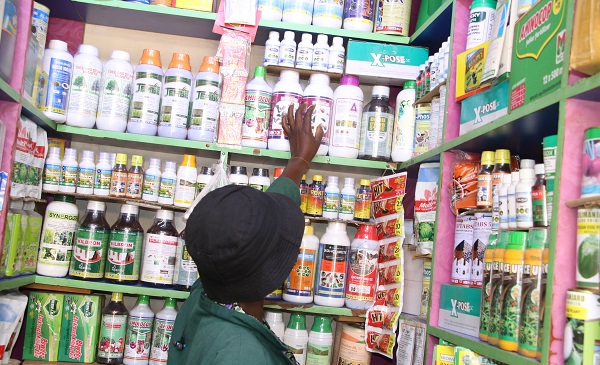
“We call upon the government of Uganda to regulate and ban all hazardous pesticides especially glyphosate and chlorpyriphos on the market in Uganda,” said Jane Nalunga, the Executive Director of the Uganda chapter of the Southern and Eastern Africa Trade Information and Negotiations Institute (SEATINI), a regional NGO that promotes pro-development trade, fiscal and investment-related poicies and processes.
Backbone of Uganda’s economy
The activists say Uganda’s agriculture sector is the mainstay of Uganda’s economy as it remains the main source of food, raw materials for industries, and employment of about 70% of Ugandans. The sector contributes about 24% to the country’s GDP.
“We cannot allow people with intellectual dishonesty to continue playing with the sector,” one of the activists said on Jan.5 during a press conference at the SEATINI-Uganda headquarters in Kampala. “We are aware that pesticides are significantly impacting health, biodiversity, socio-economic well-being, trade, and food security,” added Nalunga.
According to a 2020 World Health Organisation report, about 385 million cases of unintentional pesticide poisoning, including 11,000 deaths, mostly in low- and middle-income countries such as Uganda, are registered annually worldwide. According to UNICEF, pregnant and breastfeeding mothers, children under the age of five and the elderly are the most vulnerable to the effects of pesticides.
The activists say increased use of highly hazardous pesticides in Uganda is a threat to the right to adequate food, people’s livelihoods and farmers’ rights. They say pesticide runoff is reducing aquatic species diversity by 42% and threatening pollinators like bees. These insects are particularly critical for 75% of global crop production.
According to the European Environmental Agency, pesticides are intrinsically harmful to living organisms. When used outdoors, they can impact ecosystems even when they are intended to exclusively target a specific pest.
Herbert Kafeero, the Programme Manager at SEATINI-Uganda says the use of hazardous pesticides also has implications for trade. He says, in 2015, the government of Uganda imposed a self-ban on the export of agricultural produce to the EU because agro-chemical residues had been found in Uganda’s agricultural produce. “The self-ban was meant to address the challenges that were cited by the EU,” he says, “So we cannot ignore the fact that hazardous pesticides negatively impact the country’s trade and food security.”
He says, at the time, the government committed to retrain farmers and exporters to the EU regarding the EU’s sanitary and phytosanitary standards. Kafeero says the government must find solutions to the mushrooming agro-chemical dealers on the market.
“In every trading centre, you will not miss finding an agro-chemical shop and the person operating that agro-chemical shop presents himself as an expert when they actually are not.”
The activists want the Agricultural Chemicals Control Board under the Ministry of Agriculture, Animal Industry and Fisheries to quickly profile the various agrochemicals, acaricides and inputs and their various sources that are available on the market in Uganda and ban the highly hazardous ones.
They also want the Department of Crop Inspection and Certification at the agriculture ministry to strengthen the regulation, management, use, handling, storage and trade of agrochemicals in the country.
They also want the government and other stakeholders to purposively plan and budget for education and awareness on the management, use, handling, storage and trade of agrochemicals in Uganda.
Prof. Ogenga Latigo disagrees
The activists were infact responding to Morris Ogenga Latigo, a Ugandan professor of entomology (study of insects) who had written an opinion on December 31, 2024, downplaying civil society’s concerns about hazardous pesticide and insecticide use in Uganda.
Prof. Ogenga Latigo in his article said the issue of agro-chemical use on farm pests and weeds and households was being exaggerated by civil society. He said the targeted agro-chemical inputs (pesticides, insecticides and herbicides) were being used in other countries.
The acrimonious debate has since sucked in the agricuture ministry. Stephen Byantware, the Director in charge of Crop Protection at the agriculture ministry told the media in Kampala recently that Uganda has an Agriculture Police Force and a Department of Inspection and Certification of agriculture inputs that “ensure that only nationally and globally approved agro-chemicals enter the Ugandan market.”
“The chemicals allowed into the country are those that have been approved,” he said, “There are no banned products on sale in Uganda. You cannot find DDT or Endosulfan in Uganda.”
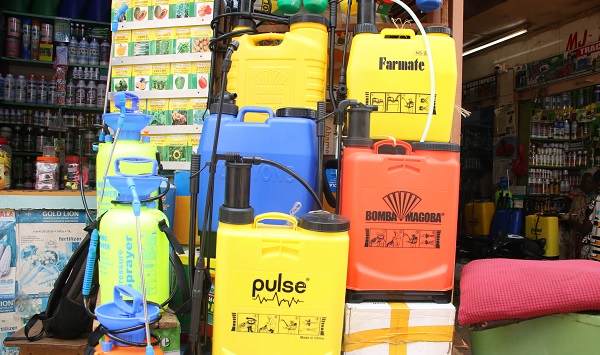
But David Kabanda, the Executive Director of the Centre for Food and Adequate Living Rights, a Kampala-based non-profit, says Ugandans should know that hazardous pesticides have become one of the “loudest killers” and yet Ugandan smallholder farmers continue to associate with these chemicals on the farms, in the food stores, and in the homes.
“It’s only in Uganda where we don’t have a farmgate policy and yet we have scientific reports that have pointed out that the food we buy in markets in Kampala is contaminated.” “Don’t we see tomatoes and broccoli full of Mancozeb fungicide yet this chemical has been banned everywhere including the EU?”
“Pesticides are silent killers of humans, of nature, of our soils that are getting barren, of our water, of our agri-food system. I don’t imagine an agri-food system in Uganda without bees, without butterflies, and above all, without grasshoppers,” said Agnes Kirabo, the Executive Director of Food Rights Alliance (FRA).
Desperate smallholder farmers
According to the activists, Uganda’s agriculture system is by default largely organic but in recent years, pest and disease management has become one of the major production constraints for the country’s millions of subsistence farmers. And in recent years, farmers have turned to pesticides to control the pests.
According to the Food and Agricultural Organisation (FAO) of the United Nations, the number of agricultural pesticides used in Uganda doubled in 12 years (2010 – 2022) from 2,990.23 tonnes to 6,009.78 tonnes.
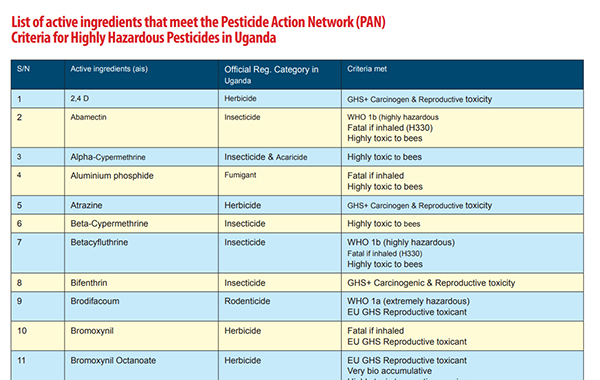
Similarly, the monetary value of pesticides imported to Uganda more than doubled from US$ 32.57 million to US$75.87 million in 2022 with a peak import value of US$108.57 million reported in 2020. The lucrative agro-chemical business has attracted more than 40 registered pesticide importing companies in the country.
The activists say the increased use of pesticides is attributed to their use for weeding and the increased use of hybrid seeds and livestock. According to the CSOs, equally alarming is that many of these pesticides are “synthetic pesticides” which are persistent organic chemicals.
A study published last year by the Food Safety Coalition Uganda (FoSCU) titled: ‘‘Food Safety-Crop Protection Nexus: Insights from the Uganda’s agriculture sector,’’ noted that of the legally registered active ingredients, 47.8% (of the active ingredients) and 68.6% of the brands in Uganda qualified as “Highly Hazardous Pesticides.”
Highly Hazardous Pesticides (HHPs) are classified as “reproductive toxicants” meaning they potentially can negatively affect the human reproductive system and have adverse effects on pregnancy outcomes and reduced fertility.
The same study noted that 15.6% of the registered active ingredients and 19.2% of the registered brands in Uganda qualified as highly hazardous pesticides in accordance with the FAO/WHO-Joint Meeting on Pesticide Management (JMPM) criteria.
According to the activists, by July 2023, over 65% of the 55 flagged active ingredients registered for use in Uganda and yet considered as highly hazardous pesticides according to the Pesticide Action Network (PAN) criteria, were not approved for use in the European Union economic bloc.
The majority (49%) of these pesticides are highly toxic to bees, 20% are carcinogenic and reproductive toxicants while 18% are probable carcinogens, and 9% are highly persistent in water and soil and are highly toxic to aquatic organisms.
They say that, based on the Uganda agrochemical register at the Ministry of Agriculture, Animal Industry and Fisheries (MAAIF) and the National Drug Authority (NDA), the country had at least 115 active ingredients and 669 brands of synthetic pesticides legally registered for use in Uganda by the end of 2023.
“These are presenting in 459 brands, but all these active ingredients in the 459 brands, according to the PAN, are classified as highly hazardous,” said Bernard Bwambale, the head of programmes at the Global Consumer Centre, or CONSENT, who also coordinates the activities on food safety at the Food Safety Coalition of Uganda.
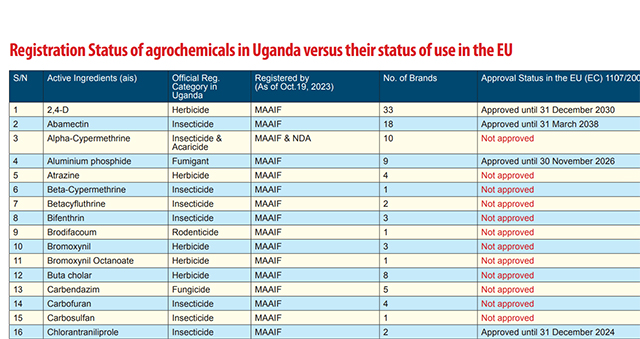
If it is hazardous in EU, it is hazardous in Uganda
Bwambale says his organisation has found that of the 55 active ingredients registered in Uganda, 65.5% of them cannot be used in their countries of origin. “Now, if a chemical, a highly hazardous chemical, is produced in a particular country and that country cannot use it, who are we to start thinking that we can use it? This is where our concern is.”
“So, whatever is not used in the EU, it means it’s not fit for use for human beings. The human beings in Uganda and the human beings in Europe are all human beings. And we are all sharing the same human rights.” He says some of the highly hazardous pesticides are mutagenic, meaning they can alter one’s DNA or genetic make-up.
“Literally, it would mean that when you consume food consisting of this kind of product, you stand a risk of your DNA or your genetic makeup being altered. And that is why some research is pointing to some of these chemicals being responsible for birth defects.” He says other chemicals are carcinogenic, meaning the chemical has the potential to cause cancer.
But Prof. Ogenga Latigo says some chemicals like Mancozeb the civil society claim are carcinogenic are not. He describes others as ‘probable carcinogens.’ A probable carcinogen is a substance that has a strong but not conclusive amount of evidence that it can cause cancer in humans.
But Bwambale says, “They don’t want people to keep confusing us with science.” He says other chemicals have been considered fatal when inhaled. “Imagine a farmer who doesn’t know these things and is spraying but is carrying a baby. So both the mother and the baby are inhaling this chemical,” he says, “We need to regulate these chemicals as much as we can.”
He says recent studies have indicated that some of these chemicals were found in human bodies –in sweat, urine and blood, in food and in water. “When the Europeans send us, for instance, these chemicals and we buy them, they also have regulations on which kind of food we can sell to them. We all know that.”
He says when farmers use these chemicals in the name of commercialising agriculture, they may produce very big tomatoes that do not rot, for example, but they cannot sell them beyond Uganda.
“You cannot put them on the EU market because they don’t meet the standard of the EU market. So they (agriculture products still remain with us,” he says.
Source: The independent
FARM NEWS
Coffee Leaf Rust disease hits Mbale region farmers
Published
7 months agoon
November 18, 2024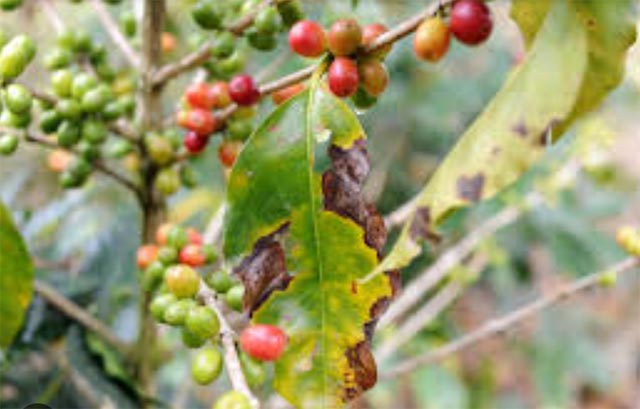
Mbale, Uganda | Coffee farmers from Bulambuli and Sironko districts are counting their losses after being attacked by coffee leaf rust disease. The disease, caused by the rust fungus Hemileia vastatrix, can reduce coffee production by between 30% to 50%.
The most affected sub-counties in Sironko include Buhugu, Masaba, Busulani, Bumasifwa, Bumalimba, and others. In Bulambuli, the hardest-hit areas are Lusha, Bulugeni Town Council, Buginyanya, and Kamu, among others.
In an exclusive interview with our reporter, Francis Nabugodi, the Sironko District Agricultural Officer, spoke about the devastating effects on farmers. “This disease has negatively impacted farmers in terms of production, and since it’s coffee season, they are going to make losses,” Nabugodi said.
He added that he had instructed extension workers to start massive sensitization campaigns in the six affected sub-counties about preventive measures, such as spraying, to curb the spread of the disease.
Nabugodi also urged the Ministry of Agriculture, Fisheries, and Animal Husbandry to supply the district with chemicals so they can distribute them to farmers, as many cannot afford to buy them.
Julius Sagaiti, the LCIII Chairperson of Lusha Sub-County in Bulambuli District, stated that his sub-county is the worst affected, with over 100 farmers having all their gardens hit by the disease. He called for urgent action from Bulambuli district leaders, warning that the situation would have severe consequences for farmers.
Timothy Wegoye and Suzan Nanduga, both affected coffee farmers from Bukisa, the worst-affected sub-county, shared their concerns. “The majority of farmers are ignorant about preventive measures and do not know the chemicals for spraying,” they said, urging extension workers to use the media to sensitize them.
Original Source: URN Via The Independent
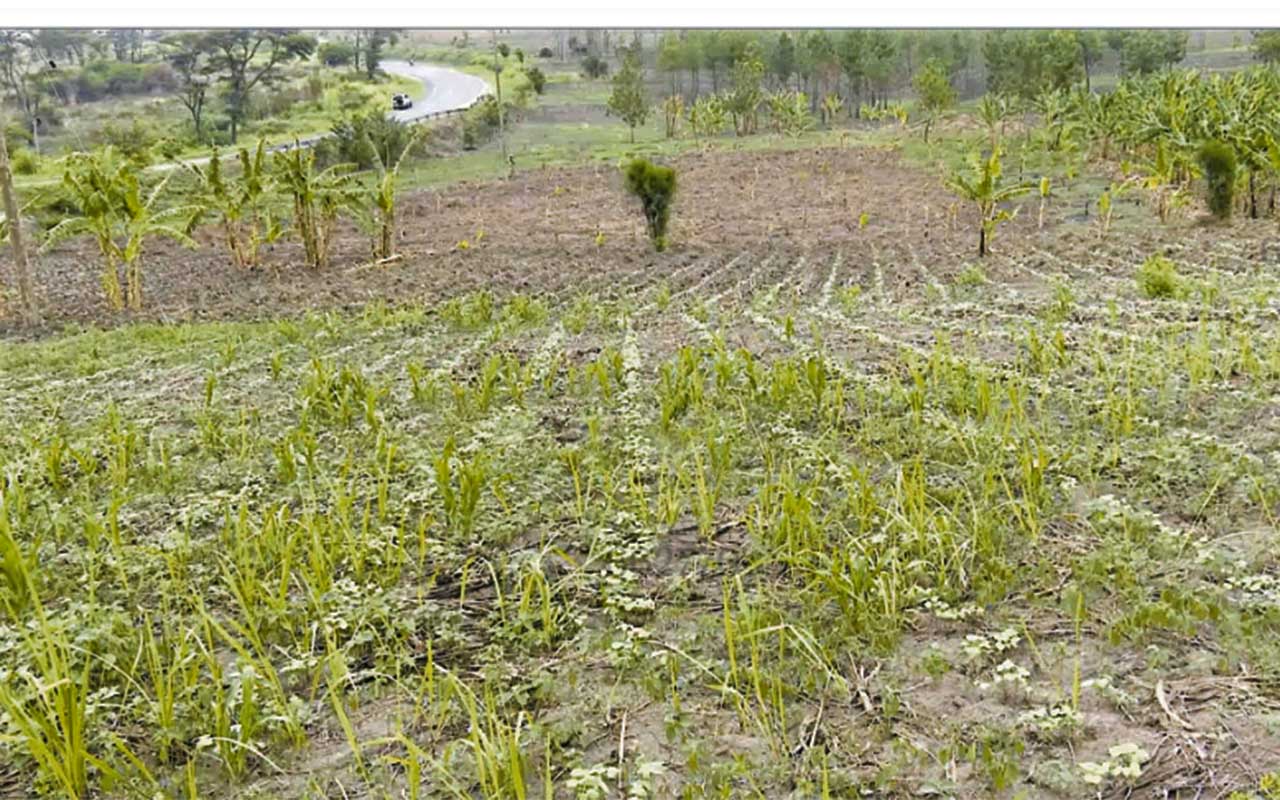
Along Bwera-Mpondwe road, in Kasese district, farmers till the land, with every hoe raising more dust than dirt, a testament of how hard the sun has scorched the ground. Located at the slopes of the Rwenzori Mountains, the low altitude leads to high temperatures as the district also sits on the Equator. In January this year, the average temperatures were 25.1 °C
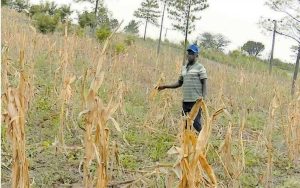
Gideon Bwambale walks through drying maize garden.
Today, the temperature is 28.6 °C. The most affected areas are low-lying sub-counties like Kahokya, Nyakatonzi and Muhokya.

A decade of displacement: How Uganda’s Oil refinery victims are dying before realizing justice as EACOP secures financial backing to further significant environmental harm.

Carbon Markets Are Not the Solution: The Failed Relaunch of Emission Trading and the Clean Development Mechanism

Govt launches Central Account for Busuulu to protect tenants from evictions

Top 10 agribusiness giants: corporate concentration in food & farming in 2025

Uganda’s top Lands Ministry official has been arrested and charged with Corruption and Abuse of Office, a significant event that will have far-reaching implications for land governance in the country.

A decade of displacement: How Uganda’s Oil refinery victims are dying before realizing justice as EACOP secures financial backing to further significant environmental harm.

Govt launches Central Account for Busuulu to protect tenants from evictions

Environmentalists raise red flags over plan to expand oil palm fields in Kalangala

Innovative Finance from Canada projects positive impact on local communities.
Over 5000 Indigenous Communities evicted in Kiryandongo District
Petition To Land Inquiry Commission Over Human Rights In Kiryandongo District
Invisible victims of Uganda Land Grabs
Resource Center
- LAND GRABS AT GUNPOINT REPORT IN KIRYANDONGO DISTRICT
- RESEARCH BRIEF -TOURISM POTENTIAL OF GREATER MASAKA -MARCH 2025
- The Mouila Declaration of the Informal Alliance against the Expansion of Industrial Monocultures
- FORCED LAND EVICTIONS IN UGANDA TRENDS RIGHTS OF DEFENDERS IMPACT AND CALL FOR ACTION
- 12 KEY DEMANDS FROM CSOS TO WORLD LEADERS AT THE OPENING OF COP16 IN SAUDI ARABIA
- PRESENDIANTIAL DIRECTIVE BANNING ALL LAND EVICTIONS IN UGANDA
- FROM LAND GRABBERS TO CARBON COWBOYS A NEW SCRAMBLE FOR COMMUNITY LANDS TAKES OFF
- African Faith Leaders Demand Reparations From The Gates Foundation.
Legal Framework
READ BY CATEGORY
Newsletter
Trending
-

 MEDIA FOR CHANGE NETWORK1 week ago
MEDIA FOR CHANGE NETWORK1 week agoA decade of displacement: How Uganda’s Oil refinery victims are dying before realizing justice as EACOP secures financial backing to further significant environmental harm.
-
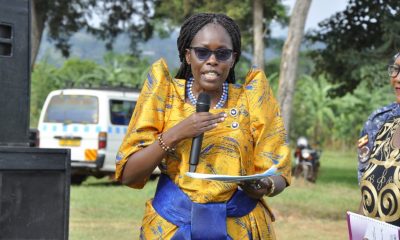
 MEDIA FOR CHANGE NETWORK1 week ago
MEDIA FOR CHANGE NETWORK1 week agoGovt launches Central Account for Busuulu to protect tenants from evictions
-
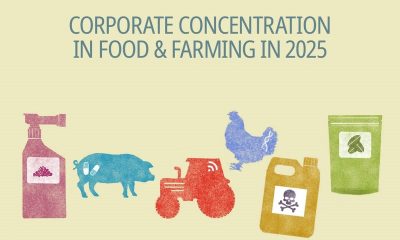
 WITNESS RADIO MILESTONES2 weeks ago
WITNESS RADIO MILESTONES2 weeks agoTop 10 agribusiness giants: corporate concentration in food & farming in 2025
-
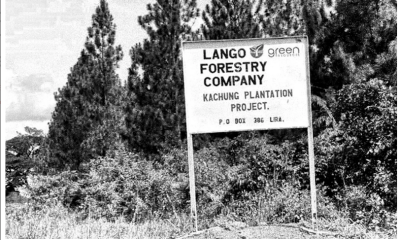
 MEDIA FOR CHANGE NETWORK1 week ago
MEDIA FOR CHANGE NETWORK1 week agoCarbon Markets Are Not the Solution: The Failed Relaunch of Emission Trading and the Clean Development Mechanism

